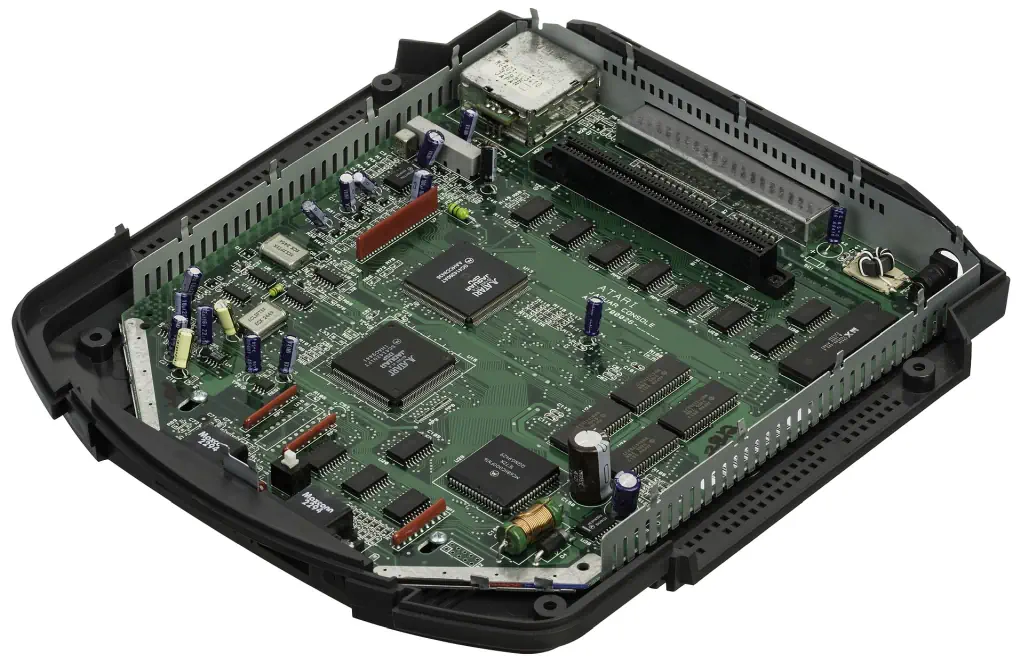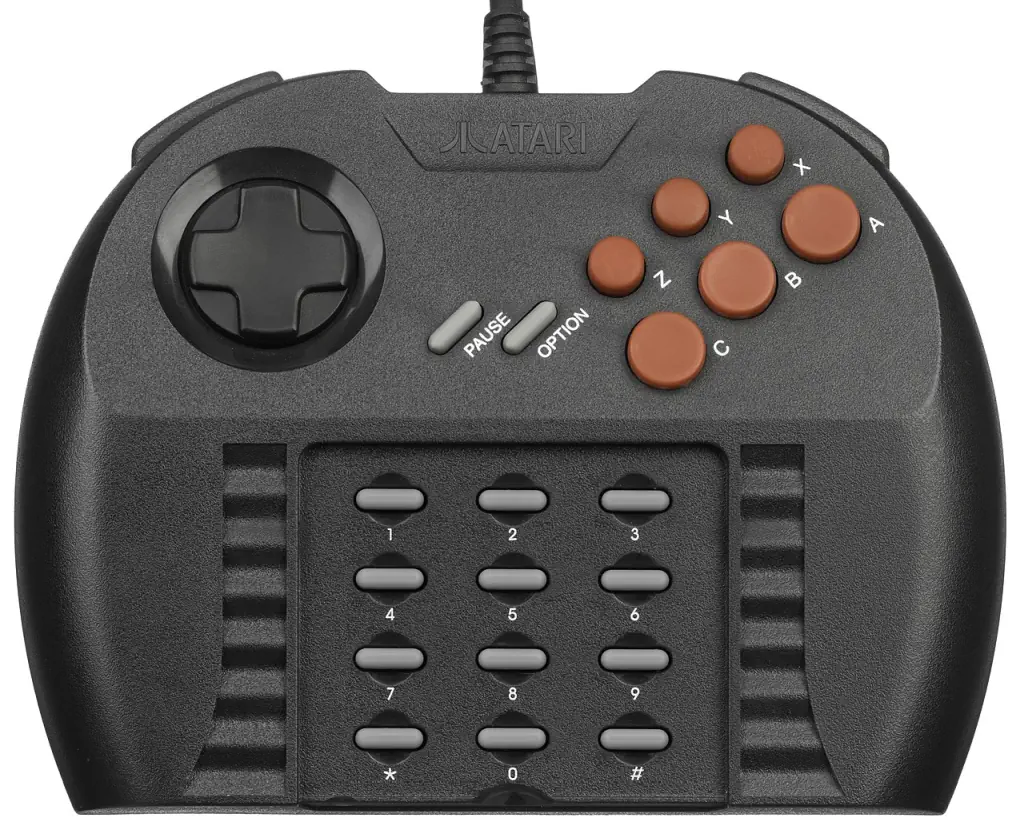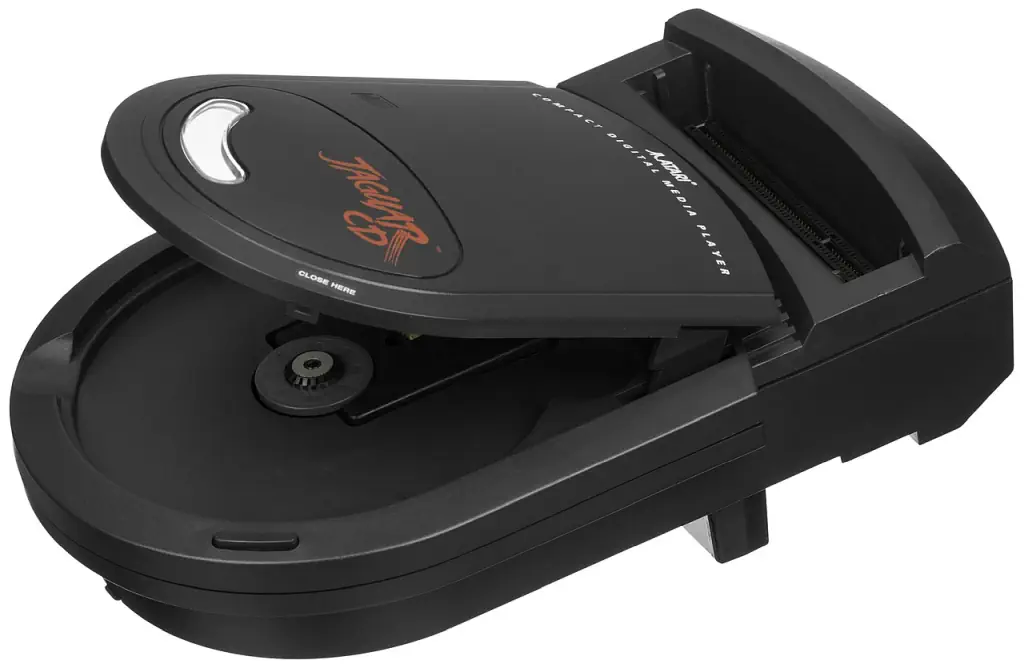The Atari Jaguar "64-bit" console
The Atari Corporation released the Atari Jaguar in 1993 onto the North American market. It is a fifth-generation video game console (1993-2006) and competed with the 16-bit Sega Genesis, the Super Nintendo and the 3DO machine that also launched that year.
Atari marketed this machine as a 64-bit gaming platform, due to the fact that it uses a 64-bit blitter. It also had two custom 32-bit processors, called Tom and Jerry, in addition to a Motorola 68000 CPU. TOM was responsible for the graphics, capable of producing 16.8 million colors in a 720x576 resolution, and Jerry was responsible for sound, featuring 2 16-bit DACs, Wavetable and AM Synthesis.
The 64-bit moniker caused some controversy in the industry and among buyers. The CPU and the custom processors were all 32-bit and the only thing 64-bit was the blitter. The "Electronic Gaming Monthly" ridiculed the claim and said that by the same math, the Sega Saturn would be a 112-bit machine.
Atari had worked on developing the Jaguar some time after starting another project, the Atari Panther. The Panther would have been the successor to the Atari XE Game system, and was based on technology from the Atari ST line of computers. The development of the Jaguar progressed faster than expected causing Atari to cancel the Panther project and focus solely on the Jaguar instead. At this time however, the Atari ST computers were out-sold by the Commodore Amigas and both of those systems were outsold by the upcoming Windows-Intel PCs that started to take chunks out of the computer and gaming market.
Sales of the Atari Jaguar were not great. The CEO Sam Tramiel had said in an interview that the system was not as powerful as the Sony Playstation, which was upcoming and the number of games coming out for the system was very low. A total of 50 games were ultimately produced, and less than 150,000 Jaguars were sold. As of December 1995 Atari sat on an inventory of about 100,000 units that it was unable to sell. Atari had failed to inform its stockholders about the low sales by not filing the required forms, its revenus had declined by more than half. Atari abandoned the Jaguar in 1995 and in 1996 the Atari company agreed to merge with JTS, Inc, a Hard Drive manufacturer, and together the companies formed the JTS Corporation. In 1998 JTS sold the Atari name and all the properties to the Hasbro company.
Atari Jaguar Motherboard

Atari Jaguar Controller

Atari Jaguar CD-ROM
In september of 1995, Atari released the Jaguar CD, a CD-ROM attachement for the Jaguar that could load CD-ROM games. 13 official games were released for the CD-ROM, but today there are more games available due to an active home-brew scene for the Atari Jaguar. In order to play games using the Jaguar CD, you needed to insert the Memory Track module that came with the unit. This provided games with about 128K EEPROM memory so that configuration and save-states could be stored. A prototype of a new machine, combining the Jaguar CD and the console into one single unit was dubbed the Jaguar Duo. It was reveiled during the 1995 Winter Consumer Electronics Show, but it never made it to market.
The Jaguar CD could also play audio CDs. When playing an audio CD, the Jaguar CD would display light patterns corresponding to the music using the Virtual Light Machine that was built into the unit.


Atari Jaguar VR
Also during the 1995 Winter Consumer Electronics Show Atari unveiled their Virtual Reality headset for the Atari Jaguar. This device was meant to compete with the Virtual Boy that Nintendo had announced earlier. The headset never made it into production and upon the merger of Atari and JTS in 1996, all remaining prototypes of the Jaguar VR headsets were destroyed, although it has been rumored that some still exist today.

Motorola 68000 CPU Family
The Motorola 68000 is a 16/32-bit microprocessor that was first released in 1979. It was widely used in computers and other electronic devices during the 1980s and early 1990s. The 68000 was known for its advanced architecture, which included a 32-bit internal bus and a 24-bit address bus, allowing it to access up to 16 megabytes of memory. This made it more powerful than many other processors of its time, such as the Intel 8086 and Zilog Z80. It was also designed to be highly modular and expandable, with a large number of on-chip and off-chip peripherals.
Some of the most famous and successful computers that used the 68000 was the Commodore Amiga and the Atari ST, both of which were popular in the home and personal computer markets. Additionally, it was also used in workstations, such as the Sun 3 and Apollo DN3000, and in a wide variety of embedded systems and industrial control systems. The 68000 was also used in the Macintosh, the first model of the Macintosh was powered by a Motorola 68000 CPU. The processor was eventually succeeded by the 68020 and 68030, which offered improved performance and additional features.
The 68000 has a 32-bit instruction set, with 32-bit registers and a 16-bit internal data bus. The address bus is 24-bit and does not use memory segmentation, making it easier to address memory. There are three ALU's (Arithmetic Logic Unit), two for calculating addresses, and one for data, and the chip has a 16-bit external address bus.
The 68000 architecture was expanded with 32-bit ALUs, and caches. Here is a list with some 680x0 versions and their major improvements:
- 68010 - Virtual memory support
- 68020 - 32-bit ALU & Instruction Cache
- 68030 - On-Chip MMU, 2x 256 byte cache
- 68040 - 2x 4K Cache, 6 stage pipeline, FPU
- 68LC040 - No Floating Point Unit (FPU)
- 68060 - 2x 8K Cache, 10 stage pipelinet

Source: WikiPedia - Motorola 6800
Source: WikiPedia - 68000 Series


